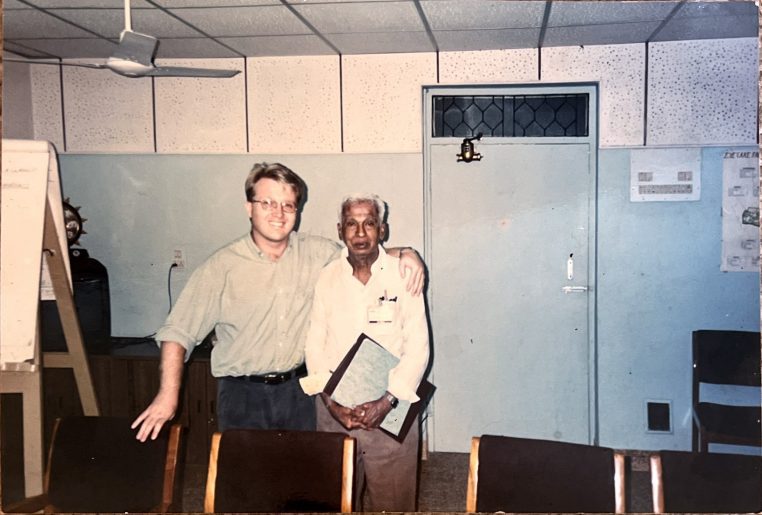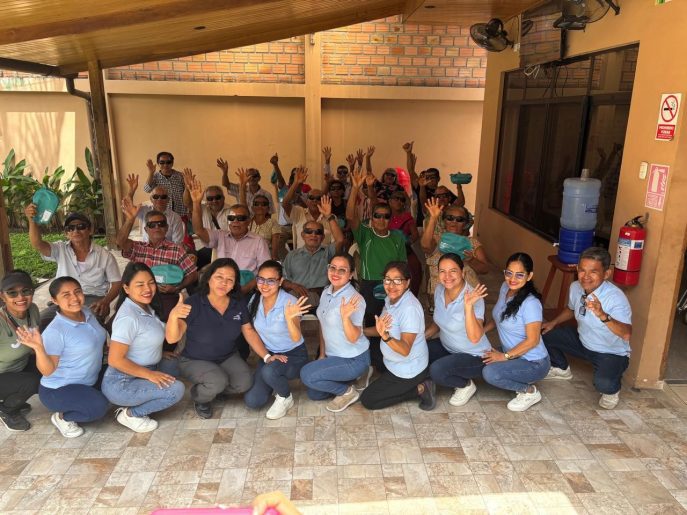Source: New York- Presbyterian
A physician at New York-Presbyterian/Columbia University Medical Center, using an experimental electronic retinal implant has been able to partially restore the sight of a woman previously blinded by retinitis pigmentosa. The woman is able to see light and make out figures for the first time in 20 years, explained lead researcher Lucian V. Del Priore, MD, PhD, an Attending Surgeon at New York-Presbyterian Hospital and a Professor in the Department of Ophthalmology at Columbia University College of Physicians and Surgeons.
The retinal implant is currently being investigated for the treatment of retinitis pigmentosa, a progressive disease that causes degeneration of photoreceptor cells in the outer layer of the retina. The inner layers of photoreceptor cells still function in patients with retinitis pigmentosa so the implant is used to bypass these damaged cells to reach the healthy ones.
How the Device Works
The device works as a three-part system. The first part is an external video camera that is mounted on a pair of eyeglasses worn by the patient. That image is processed and then a signal is transmitted wirelessly to the second part of the system – a microprocessor implanted on the outside of the eye under the lid that translates the information into a series of electrical pulses.
Those electrical pulses are then sent to the third part: a tiny patch containing 60 electrodes that is attached to the retina. The electrical stimulation from the electrodes causes retinal nerves to transmit a message through the optic nerve to the brain. The brain then interprets the electrical stimulation into light and dark spots that form an image. The images seen are rudimentary. However, for a patient who has had no vision initially, the level of vision afforded by this device can represent a remarkable improvement, Dr. Del Priore said.
The device works best with high contrast images (eg, a white object on a black background or vice versa) and at night, when there is high contrast between lighted objects and the dark background. The patient who received the device five months ago at NewYork-Presbyterian Hospital/Columbia University Medical Center is now able to see large letters on a computer monitor and she also describes being able to see street and traffic lights as well as light coming in through the window of her front door. Her vision continues to improve, Dr. Del Priore said.
Learning to use the implant properly requires a major commitment on the part of the patient, as it takes several years of rehabilitation to learn how to use the device and interpret the patterns that the patient sees. This part of the visual training involves using direct electrical stimulation of the retina; successful interpretation of the image by the patient requires that she participate in one day per week of visual training in a laboratory and then practice the techniques learned at home. The visual training includes, for example, asking the patient to find shapes on a computer screen and point to them, allowing the patient to relearn eye-hand coordination.
The surgery required to implant the device took approximately 5 or 6 hours with the patient under general anesthesia. While the patient treated by Dr. Del Priore and colleagues did not experience any serious side effects, he said that there are surgical complications that can result from surgery of that length, such as infection, low eye pressure, and movement of the device after surgery.
Currently, the device is only being investigated for use in the treatment of retinitis pigmentosa. Dr. Del Priore said that patients with conditions like macular degeneration would not benefit markedly from the current generation of the implant device, as the additional vision gained from the device is not worth the risk of surgery and length of rehabilitation the patients would have to undergo. Dr. Del Priore believes that the technology will continue to improve and offer a higher image resolution in the future. “At that point, we will have more experience and it is likely that use of multi-electrode arrays will likely expand to other eye diseases,” he said.
Faculty Contributing to this Article:
Lucian V. Del Priore, MD, PhD, is an Attending Surgeon at NewYork-Presbyterian Hospital and a Professor in the Department of Ophthalmology at Columbia University College of Physicians and Surgeons.



